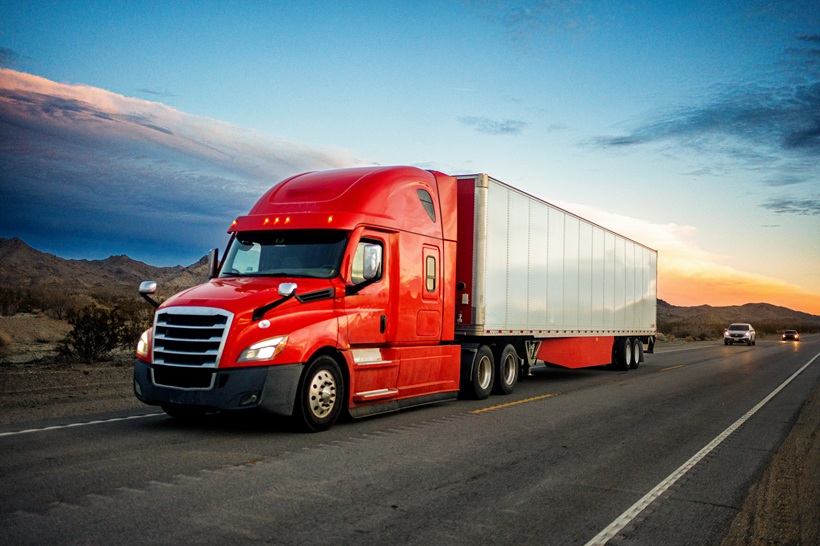
TCA Truckload 2025: Freight Market Uncertainties and Shifting Strategies
From 2022 to 2024, the freight recession stuck around like the ultimate unwanted houseguest. The comfort for the industry was that all recessions are cyclical, and that it couldn’t go on forever. At the end of 2024, some of the most knowledgeable industry experts thought it was indeed over.
Now, in the truckload market and in freight at large, there’s an unwelcome sense of déjà vu, and a feeling that the houseguest might be the Worst Roommate Ever. This feeling has been exacerbated by ongoing uncertainty about tariff policy, even as the federal government has started rolling back controversial regulations that amounted to unfunded mandates on fleets.
Discussion of the state of the freight market dominated conversations at TCA Truckload 2025, which took place March 15-18 in Phoenix. And while that was the prevailing topic at the conference, it was far from the only issue discussed on the floor and during panel sessions.
Tariff threats help halt the recovery
“Uncertainty is not our friend,” said Joe Beacom, vice president and chief safety and operations officer for Landstar System, at Truckload 2025. This sentiment, referencing on-again, off-again tariffs on Canada and Mexico, echoed throughout the event as carriers grappled with the unpredictable business environment.
Bob Costello, chief economist at American Trucking Associations (ATA), painted a stark picture of what tariffs could mean for carriers:
- Equipment costs could skyrocket, with tariffs potentially adding $25,000 to $35,000 to the price of a new Class 8 tractor
- Cross-border routes would be impacted, affecting carriers with significant operations in Canada and Mexico
- Consumer confidence could take a beating, leading to reduced freight demand
- The nearshoring trend bringing manufacturing from China to Mexico could be disrupted
Steve Brookshaw of TFI International, which has a significant presence in both Canada and Mexico, put it bluntly: “We’re getting hit on both sides.”
“If [tariffs] are in for any substantial amount of time, I think that brings in a real risk of macro-recession, no doubt about it,” Costello told attendees. “It’s going to be a drag on freight volumes, because tariffs, after all, are taxes. As importers pay those, they’ve got to raise prices. When you raise prices on goods, people are going to buy less of them.”
A potential silver lining could emerge if tariffs are low or don’t get implemented at all. As Costello noted, “If you take away what’s going on with tariffs, in particular… I would have come out here and told everybody: It’s not going to be great. It’s not going to be the pandemic boom. But we are absolutely moving in the right direction.”
Carrier strategies: Doing more with less

One attendee at Truckload 2025 aptly summarized the situation, “This business is all about change. Carriers need to figure out how to adjust and manage change to maintain those profit margins.”
No matter how the tariff battle shakes out, it’s clear that carriers must adapt to a landscape that’s not going to produce the same business cycles, rate environment, and revenue outputs that once existed. This was evident in the “Challenges and Opportunities for Large Carriers” panel.
Large carrier approaches
In that panel, Knight-Swift Transportation talked about how it is focused on cost control to stay afloat as rates remain weak. Dave Williams, senior vice president of equipment and government relations, expressed what many were thinking, “We expected things to turn by now… We’re all a little bit flabbergasted on how long this has lasted.”
TFI International discussed how it emphasizes productivity metrics like truck velocity and revenue per active driver. It is also increasing sales efforts, shifting from its historical acquisition-driven growth. “We’re really looking on our revenue side,” said Brookshaw. “We need to drive that improvement ourselves.”
Meanwhile, Landstar System’s business capacity owners (BCOs) are mostly single-truck operators hit hard by rising costs that were up 30% over three years. Many are sitting idle due to unsustainable operating costs. Beacom noted that the company has struggled in the weak spot market but is exploring ways to tap into contract markets.
Small carrier survival tactics
Small carriers are also implementing various strategies to weather the extended downturn and uncertainty:
- Extending equipment life cycles: Trailiner Corporation and K&J Trucking have both extended their equipment replacement cycles, with K&J moving from a four-year turn to a five-year turn.
- Tightening maintenance schedules: To make older equipment work, carriers are being more proactive with maintenance while cutting shop hours.
- Adding software solutions: Technology is being leveraged to improve efficiency and reduce costs.
- Reviewing expenses: Carriers are scrutinizing everything from tire programs and insurance to software processes.
- Tracking idling time: Brown Dog Carriers focused on reducing fuel waste by monitoring and reducing idling time.
“We were on a four-year turn moving to a five-year turn [for buying new equipment],” said Shelley Koch, President and owner of K&J Trucking. “That made a big difference for us.”
Across the board, efficiency has become imperative to survive and thrive with no immediate, booming recovery in sight. Williams summed it up well, “If you can’t make money with one truck, you can’t make money with 20,000 trucks.”
AI adoption accelerates
Artificial intelligence was a hot topic at Truckload 2025, with multiple sessions exploring real-world applications in the trucking industry.
A session titled “Real World AI in Trucking” featured Deen Albert, director of operations at Grand Island Express, and Mark Scanlan, vice president of operations and safety at D.M. Bowman Inc., discussing how their fleets have embraced AI and the positive aspects of controlling costs, overall safety, and productivity.
What stood out from this discussion was that neither company implemented AI to eliminate jobs but rather to make their employees’ jobs easier. “We communicated very early on that these tools were meant to bolster the business, make the company stronger, make it more robust, use it as a growth engine,” Scanlan explained.
Albert pledged to his staff that if AI “created room where we don’t need people in a certain area, I’m going to find something else for you to do.” The technology has allowed for more volume into the company’s network, generating different kinds of work for staff while AI handles repetitive tasks that used to be performed manually.
Practical AI applications
Carriers are implementing AI in various operational areas:
- Dispatch optimization: Both Grand Island Express and D.M. Bowman use AI to optimize their dispatching networks.
- Safety enhancements: AI-powered image recognition on in-cab cameras is helping identify risky driving behaviors while considering context.
- Driver communications: Identifying important messaging and scrubbing emails.
- Document processing: Solutions like Transflo Workflow AI help carriers eliminate manual data entry, streamline document processing, and improve back-office automation.
- Predictive maintenance: AI-driven solutions can detect early signs of vehicle failure before fault codes appear.
Rocco Marrari, vice president of sales for Pedigree Technologies, noted that small and mid-sized fleets stand to benefit significantly from these technologies: “If you think about it, it’s going to be the smaller, midsized fleets that can really benefit from this. They have less staff. Their profit margins are a lot lower.”
Implementation considerations
Panelists at Truckload 2025 also offered insights for carriers considering AI adoption:
- Assess organizational readiness: Albert spent about a year evaluating automation needs before implementation.
- Choose partners carefully: Scanlan emphasized that the right vendor should be a true partner, not solely a provider.
- Establish clear policies: Jonathan Todd, vice chair of the transportation and logistics group at Benesch Law, recommended having a policy that cements ground rules for AI use within organizations.
What’s next for freight?
As the industry navigates a downturn that’s dragged on longer than anyone thought it would, several key takeaways emerged from TCA Truckload 2025:
- Market uncertainty: Significant questions remain unanswered, particularly regarding tariffs and the broader economic landscape.
- Efficiency imperative: Both large and small carriers must find ways to maximize efficiency and value creation to survive.
- Technology as equalizer: Amber Edmondson of Trailiner Corp. noted that, “Large carriers have a lot more resources than we do, and technology kind of opens up some opportunities for us to do more with fewer people.”
- Adaptability is key: The last two-and-a-half years have thrown some unexpected curveballs at carriers. Being ready to shift plans when the market changes or new technologies come along is invaluable.
Those carriers that adapt and deftly improve efficiency will be better positioned to weather the prolonged downturn and thrive when conditions eventually improve.
TL;DR
The freight recession that was expected to end in 2024 continues plaguing the industry, with tariff uncertainty making things worse. As a result of tariffs, potential equipment cost increases and disrupted cross-border routes are halting recovery efforts. At TCA Truckload 2025, carriers discussed survival strategies: large carriers are focusing on cost control and productivity metrics while small carriers are extending equipment cycles (4 to 5 years), tightening maintenance, and leveraging technology. AI adoption is accelerating with practical applications in dispatch optimization, safety enhancement, driver communications, and document processing. Key takeaways include market uncertainty around tariffs, the efficiency imperative for survival (“if you can’t make money with one truck, you can’t make money with 20,000”), technology as an equalizer for smaller fleets, and adaptability as crucial for weathering the prolonged downturn.



